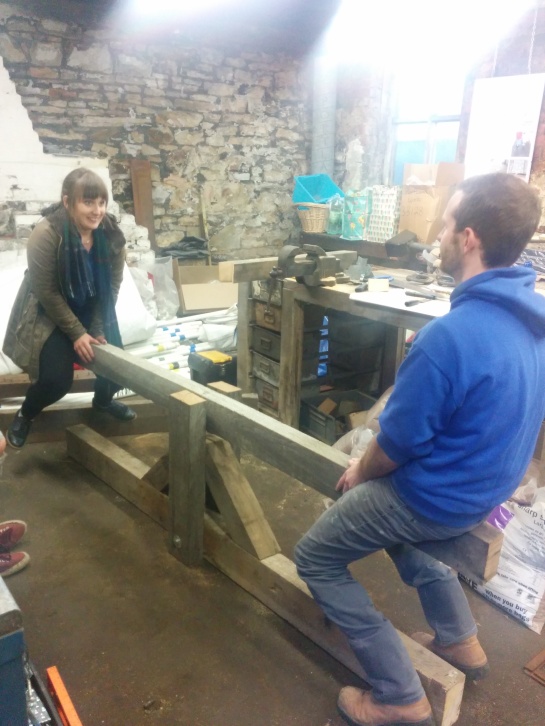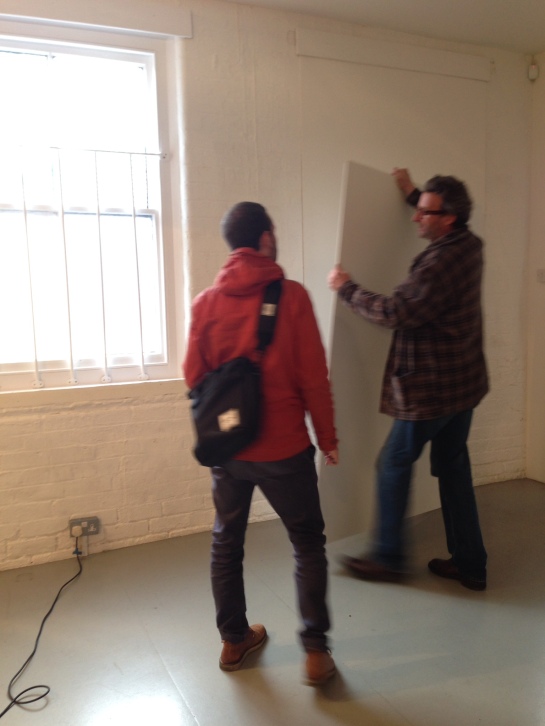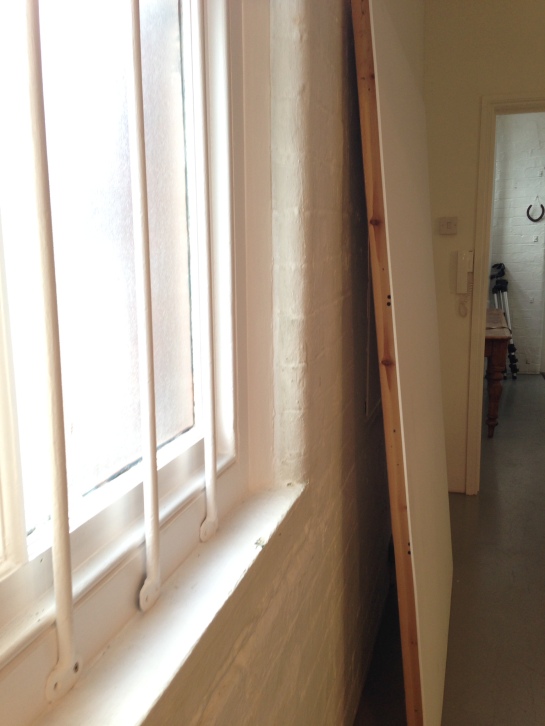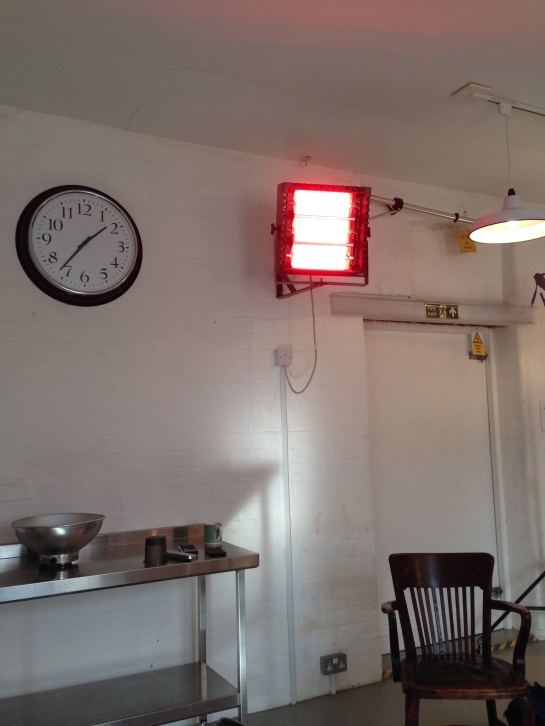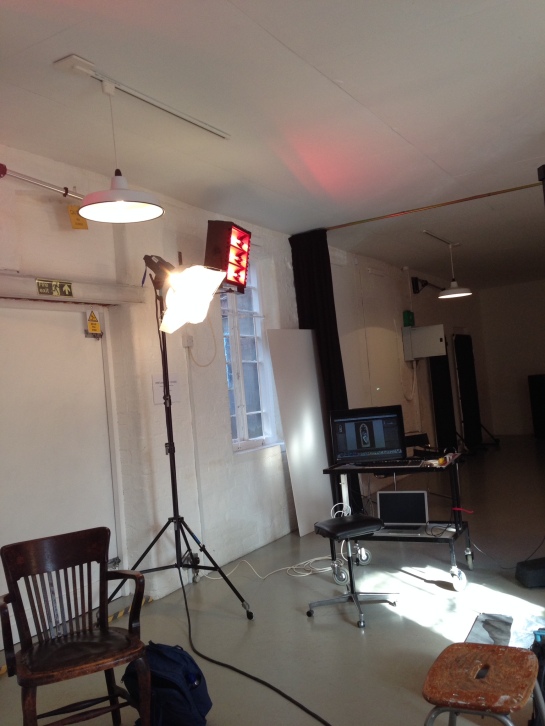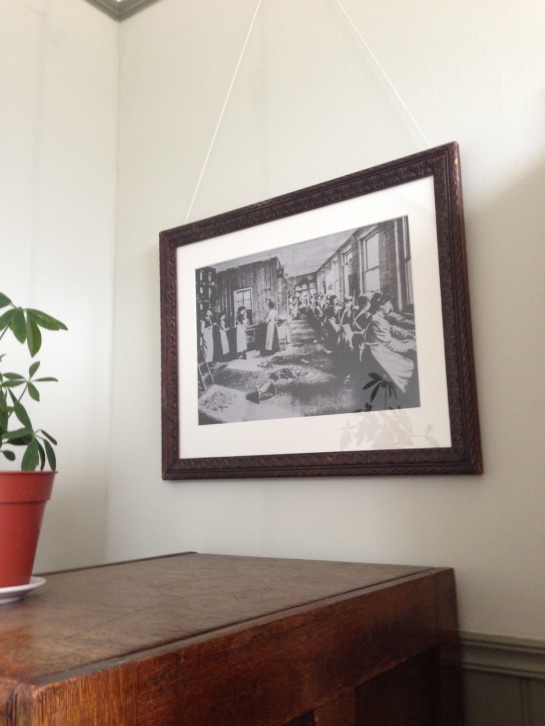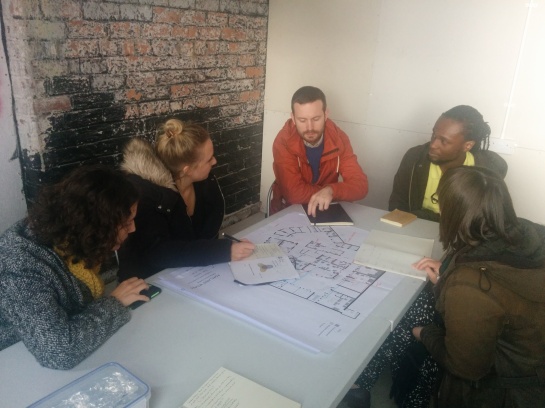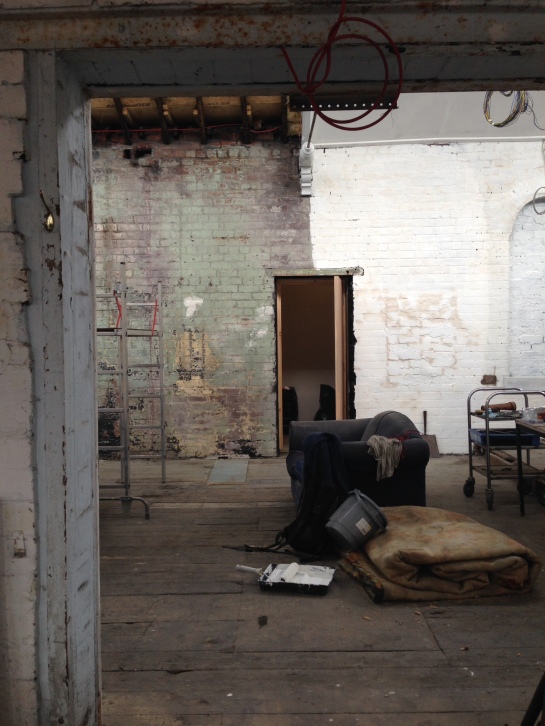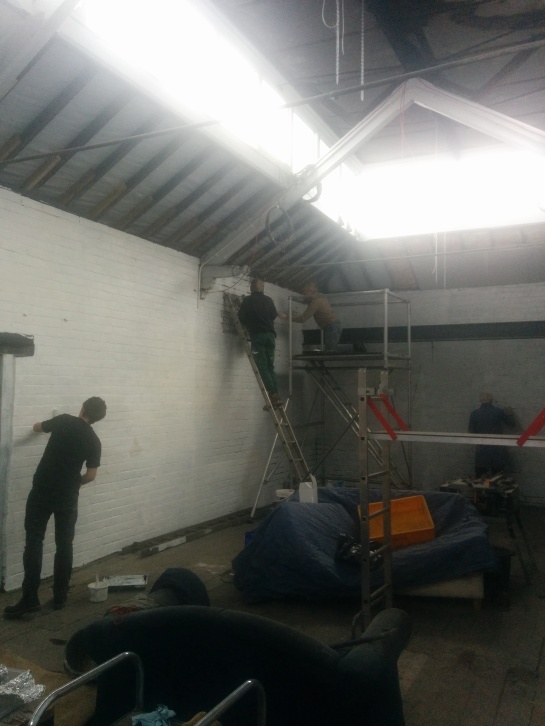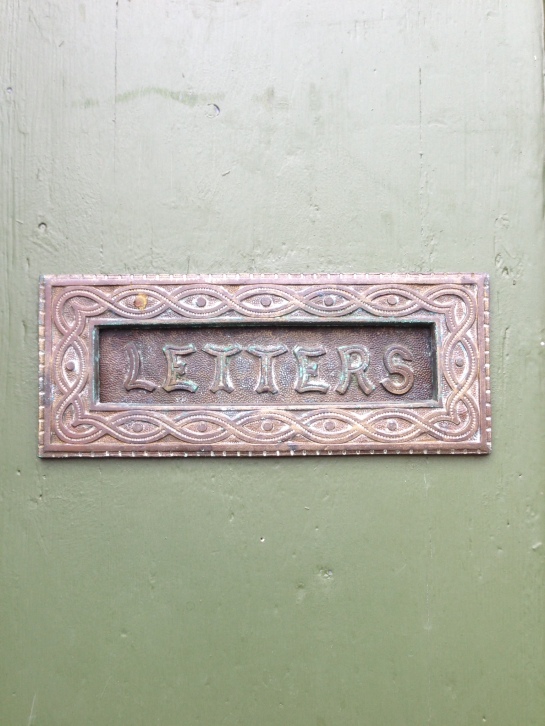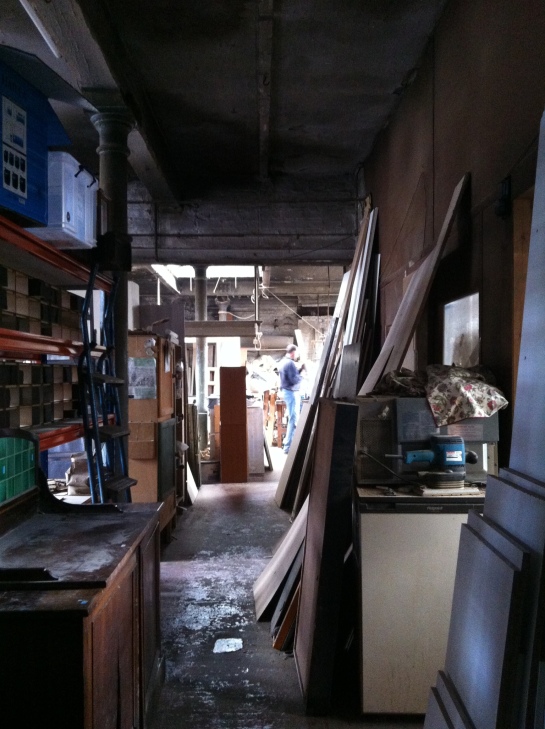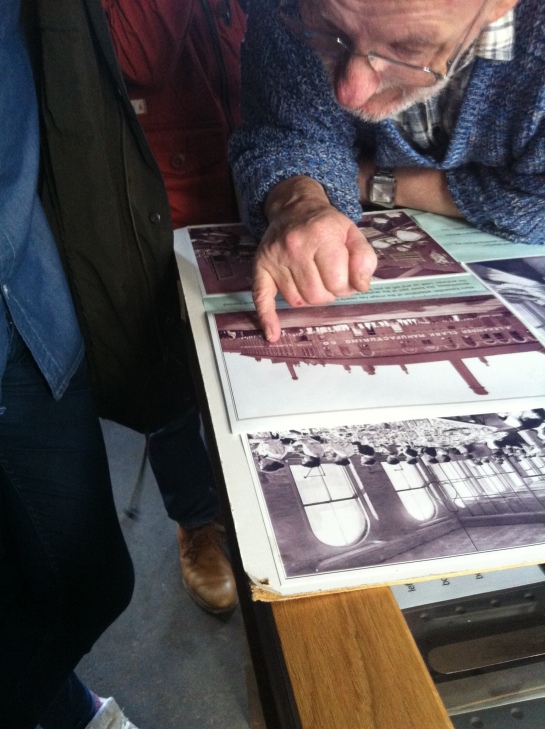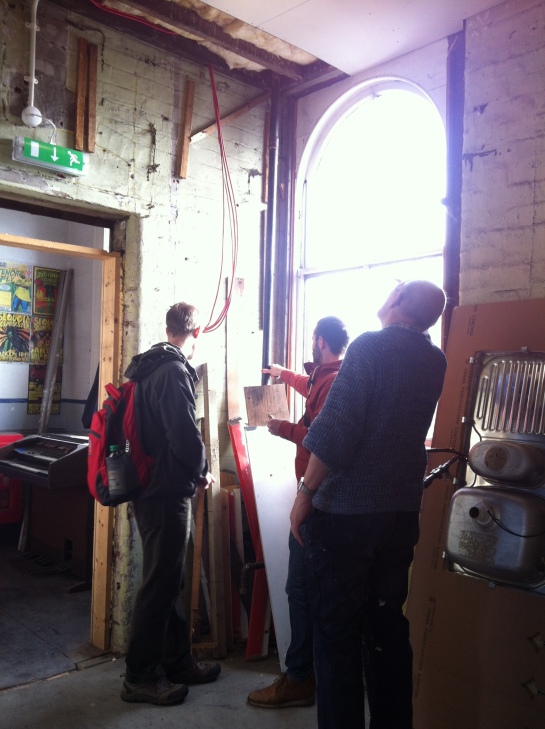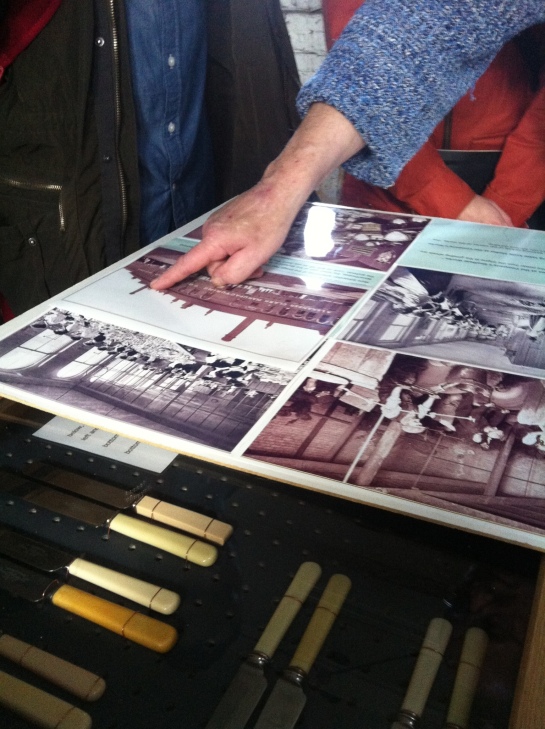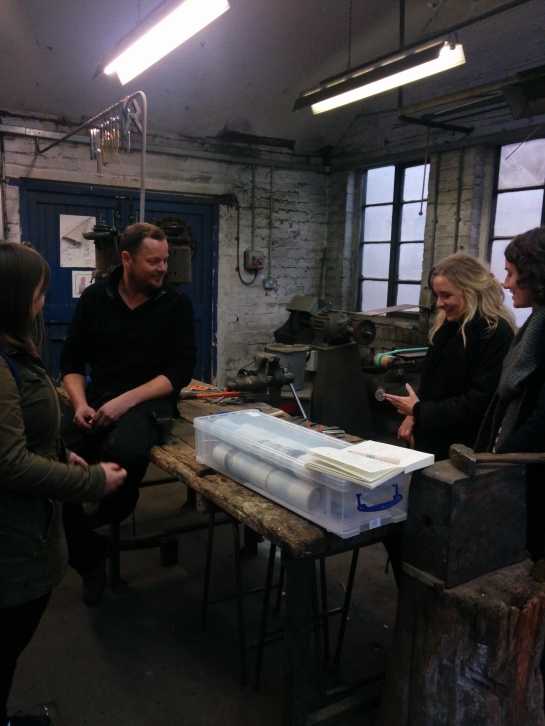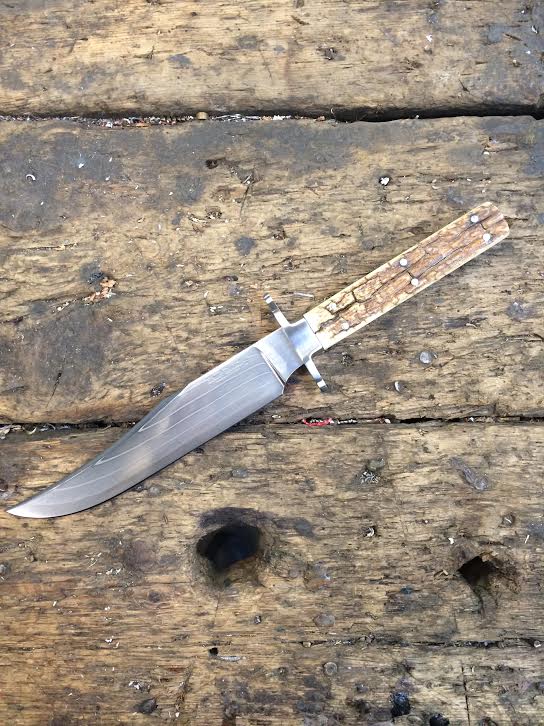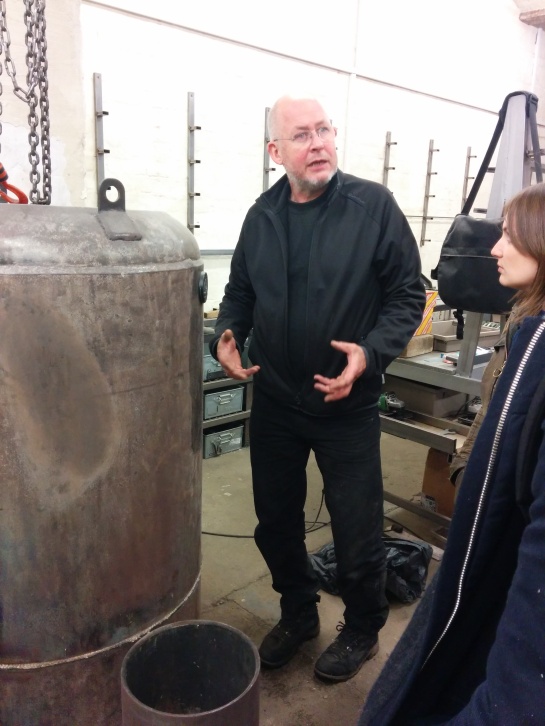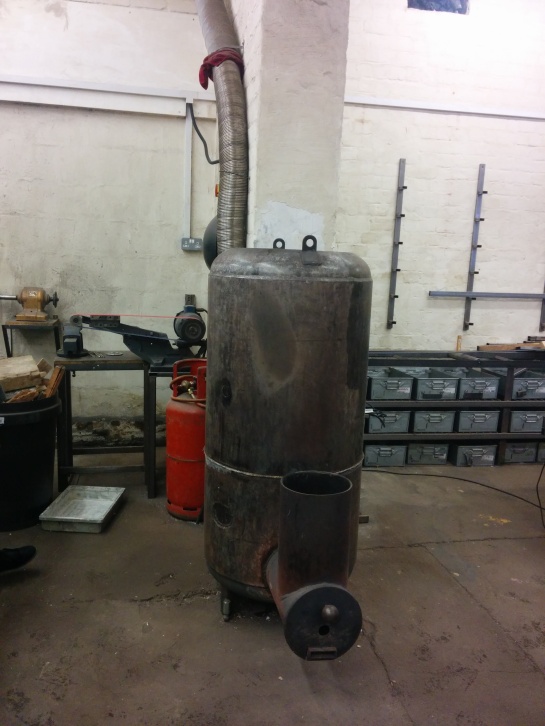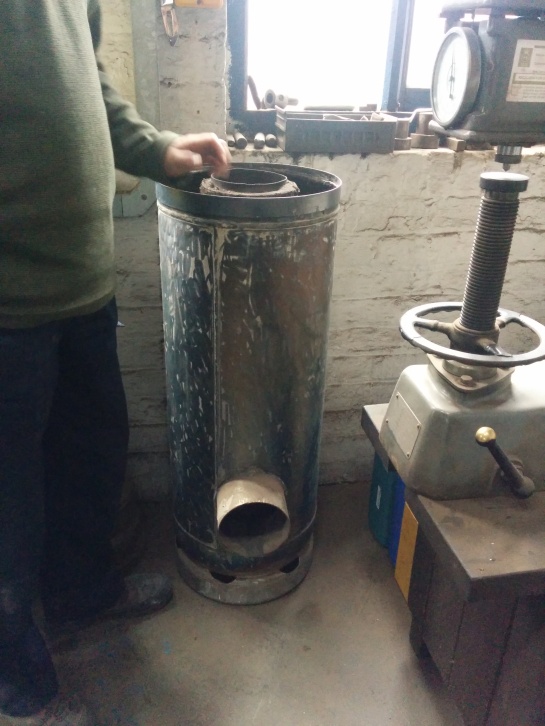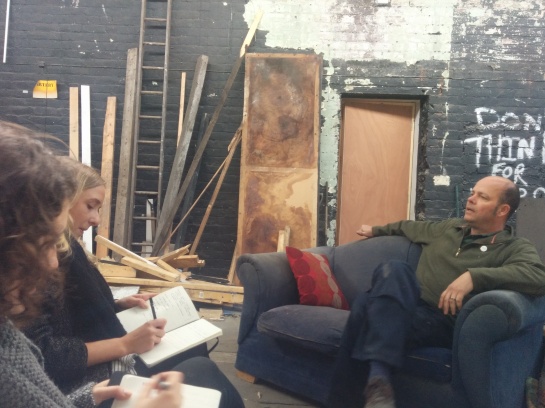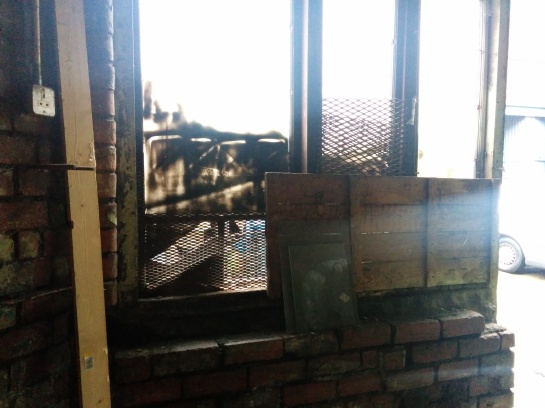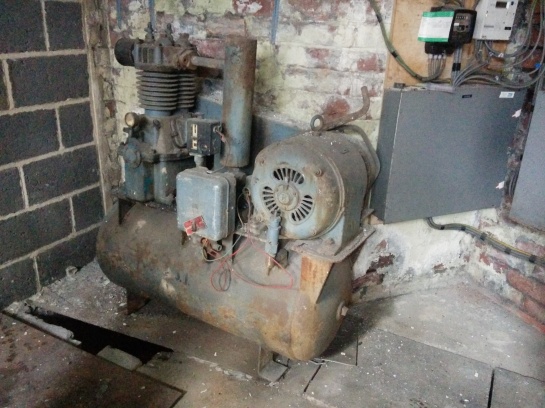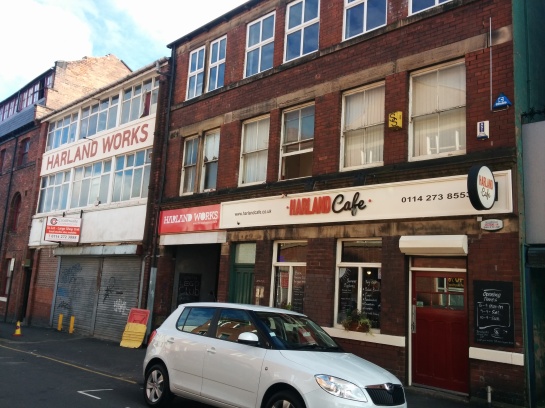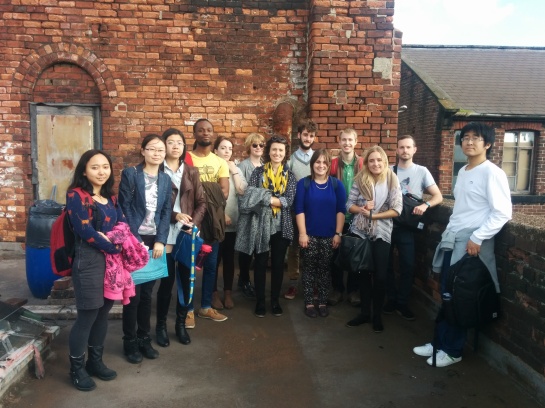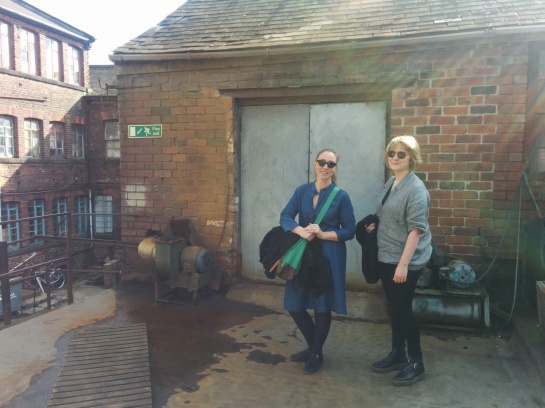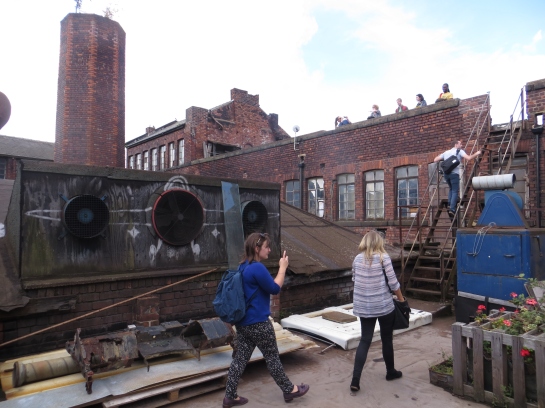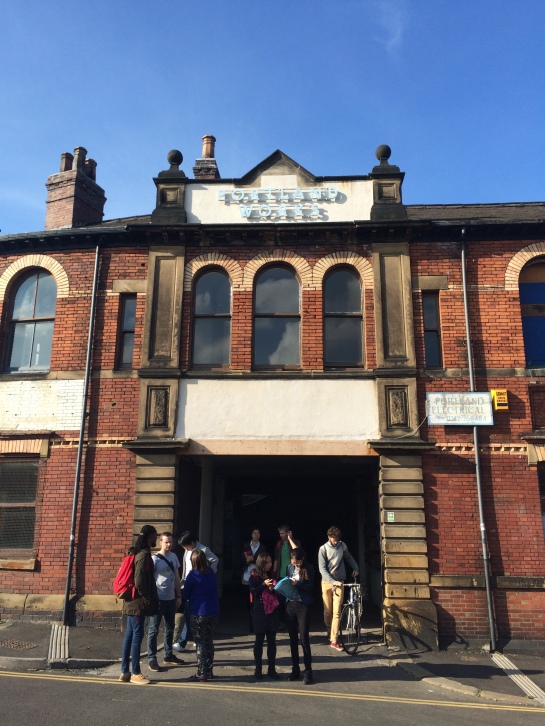Today we met with Julia to discuss the progression of our brief so far. The meeting posed various questions such as the all important:
‘How do energy and making come together?’
We decided to follow the meeting with a visit to Portland Works for volunteer day, hoping to talk to some of the volunteers and tenants on site. We first spoke to Jimmy who has been at Portland Works for 32 years. He told us he has no family link with the site, simply that he ‘wanted something doing and couldn’t find someone to do it so started to do it [himself]’. People now think of things they want to make and set him the task of making them, from the simple to the novel (he showed us a light he was making out of a jousting helmet). All his work he does in his own workshop but others come to him for bits they need doing, he describes Portland Works as ‘like a big family’.
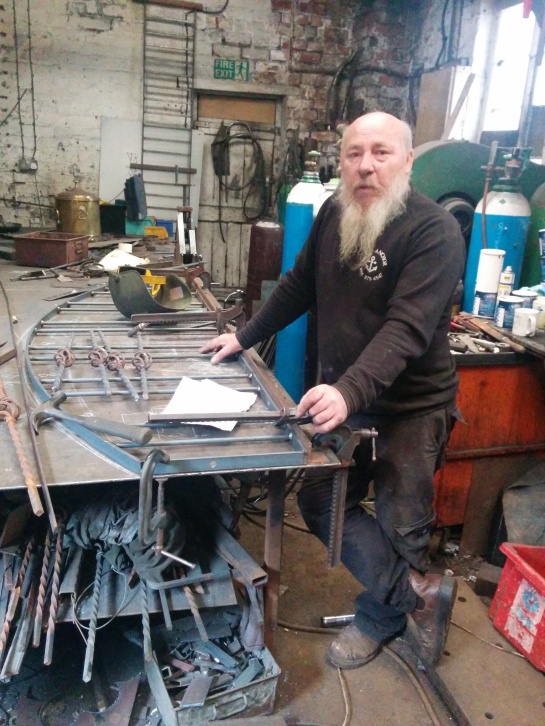
On talking to him about the building itself he said even after all this time at Portland Works, he still notices new things. He mentions ‘one day a bit of paint will fall off’ creating a new image. He has quite a few stories to tell us about his time here, some more unfortunate than others, and he speaks with enthusiasm about projects with friends. One of these focuses on the idea of perpetual motion, a kind of ‘free energy’. He shows us drawings for a mechanism powered by a push bike, part of the grand experiment.
We also got the chance to speak to a few volunteers around the building, including a newcomer, Anne, who described those who are tenants there as ‘lovely welcoming people’ and said the building itself is ‘fascinating’ and has ‘got a great feeling.’ Donna had been volunteering since June, already having replaced panes of glass and built frames with basic knowledge passed on from previous volunteers and tenants. Ken, alternatively, talked about how he feels the history of the musicians within the building, and how you can hear them at night.
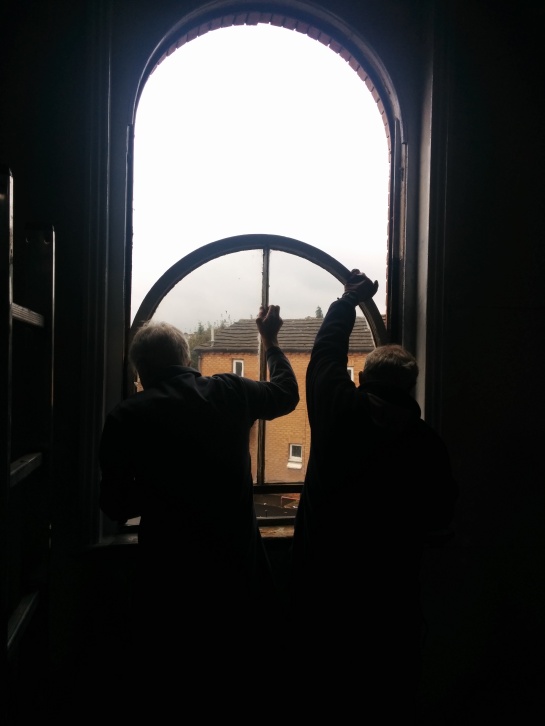
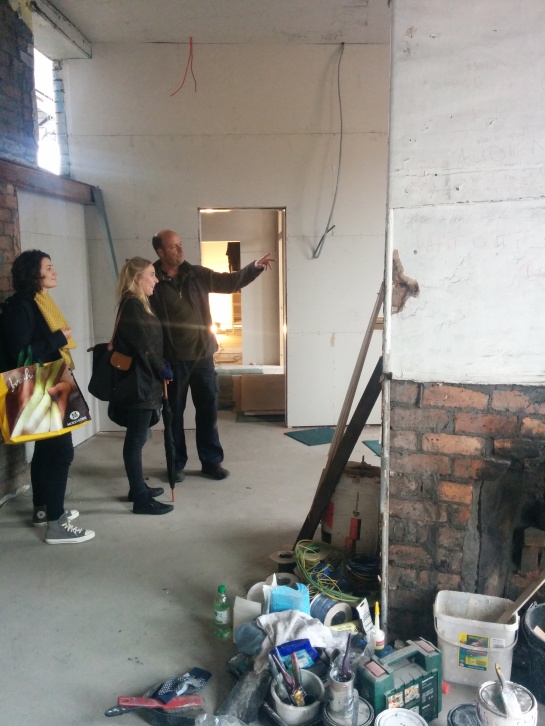
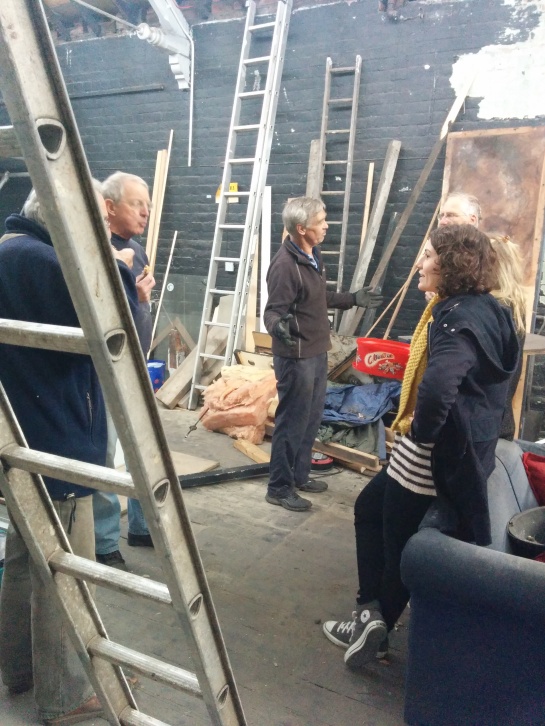
Volunteers were more than willing to share thoughts and experiences on Portland Works, but we brought cakes for good measure. Derek is fascinated by the making still going on in the building, previously a Design Technology teacher himself. Alan, a retired planner, now volunteers for Planning Aid and supported the works when there was the threat of turning it into housing. He started campaigning (with the help of a connection for publicity) and is now a shareholder.
We were told more and more people are finding out about Portland Works, quite a few saying they have connections with its past – a great thing to hear for the future of this building, and for those investing time and care into keeping it alive.
